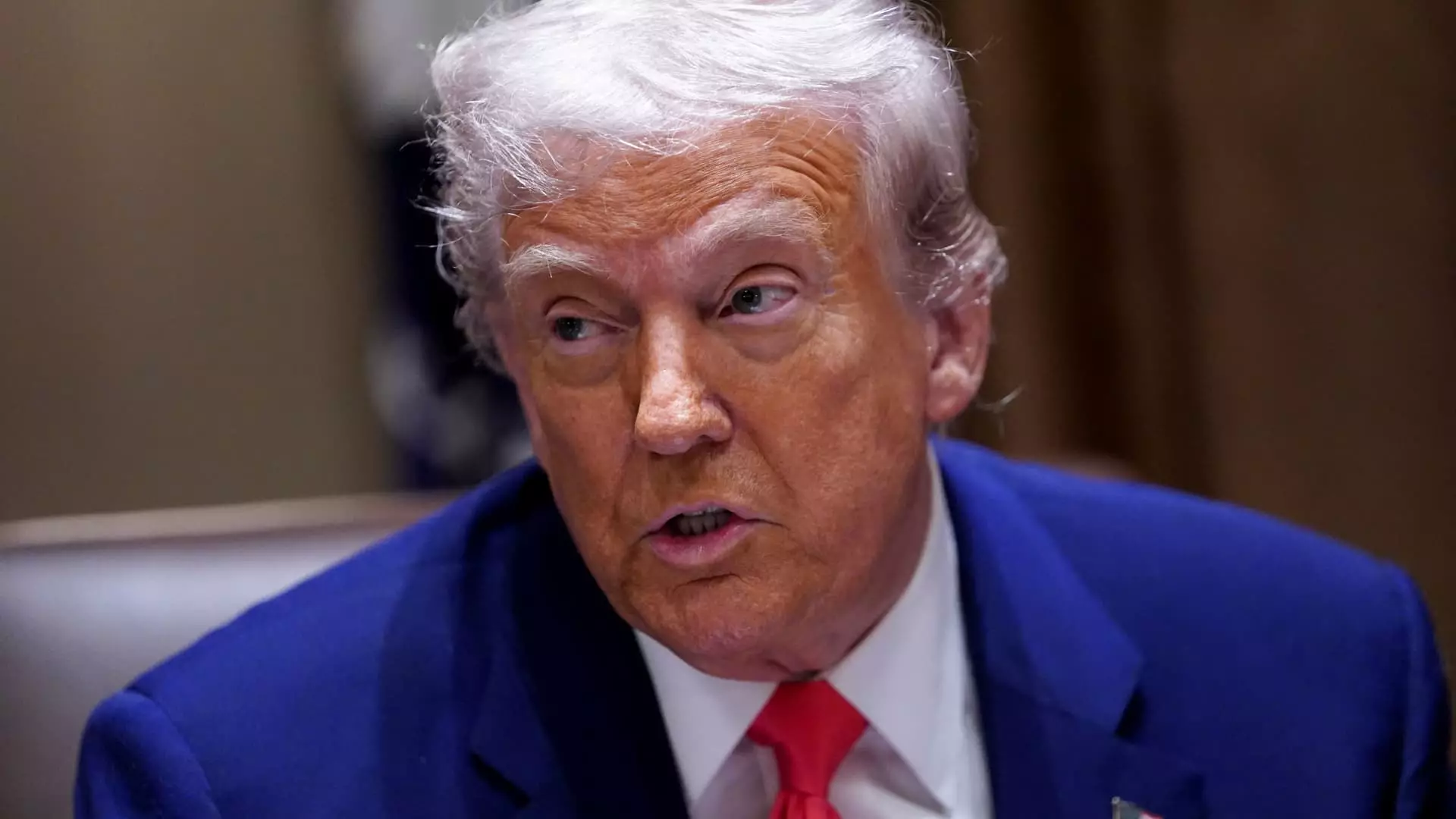The recent escalations in tariffs between the United States and China mark a critical juncture in international trade—one that many are reluctant to embrace. With estimates indicating a staggering 145% tariff on Chinese imports, the implications of these policies reach far beyond mere numbers; they signify a deliberate move towards economic isolationism. Although some may argue that protecting domestic industries is paramount, these tariffs risk choking off any meaningful trade with one of the world’s largest economies. Economist Erica York aptly encapsulates the economic outlook, observing that such extreme tariffs would virtually sever trade ties, stifling competition and innovation in the process.
The Illusion of Control
It is easy to romanticize the notion of tariffs as a tool for enforcing fairness in trade practices. However, the reality is that imposing a tariff that exceeds triple digits is akin to wielding a double-edged sword. Yes, it may provide a temporary sense of control over incoming goods; but as York pointed out, most economic prudence tells us that businesses will ultimately be forced to pass those costs onto consumers. This reflects a fundamental ignorant attitude: that by increasing tariffs, we can ignore the forcing hand of free-market dynamics that have governed trade for decades.
Further complicating this scenario is President Trump’s approach of temporarily reducing tariffs on imports from most countries while keeping China in the crosshairs. This creates an inconsistency that undermines the very rationale behind the tariffs. When you’re selectively applying trade barriers, it’s not merely an economic strategy—it’s a convoluted game of political theater that provides little in the way of substantive benefit.
The Economic Costs Are Real
Let’s discuss the proverbial elephant in the room: the economic implications. York detailed that the cumulative tariffs introduced by the Trump administration will lead to an unnerving hike in federal tax revenues, projected at a colossal $171.6 billion this year. On the surface, this seems like a windfall, but the underlying costs to American consumers—who will see prices inflate as businesses and industries absorb these new tariffs—further complicate the narrative. We are on course for the most protectionist economic landscape since the 1940s, and it is difficult not to interpret this as a decision that prioritizes short-term gains over long-term growth and stability.
As the tax implications suggest, this could easily rank as the most significant tax increase since 1993. With significant economic repercussions echoing from this move, one must question whether this is a road we really want to travel. It seems misguided in the name of a flawed conception of economic nationalism.
China’s Standoff and the Treacherous Game of Retaliation
In retaliation, China has taken a firm stance, raising their own levies to a staggering 84%. This tit-for-tat dynamic is reminiscent of an escalating arms race, where each side continues to escalate the stakes while the real economic impact on millions is sidelined in pursuit of national pride. Cooperation seems to be becoming a luxury of the past while both nations appear trapped in a cycle of retaliation that is sure to harm even the most well-intentioned goals of domestic production and innovation.
The underlying message from this back-and-forth is abundantly clear: trade wars serve only to deepen divisions and hurt workers on both sides of the Pacific. Instead of agile and resilient economic policies, we are witnessing the birth of a protectionist beast that gnaws at the very fabric of free enterprise, removing the competitive edge that America has boasted for generations.
An Eye on Alternatives
While some may cling to the belief that protectionist measures will lead to a flourishing domestic economy, it is critical to consider the alternative paths available. Policymakers must engage in dialogues that prioritize international cooperation while addressing genuine trade grievances, rather than resorting to blunt instruments that destroy mutual opportunity.
It is time to shift focus from a protectionist agenda towards a constructive policy that genuinely supports American interests without suffocating globalization or stunting innovation. A nation built on engagement instead of isolationism will emerge as a stronger competitor on the world stage.

